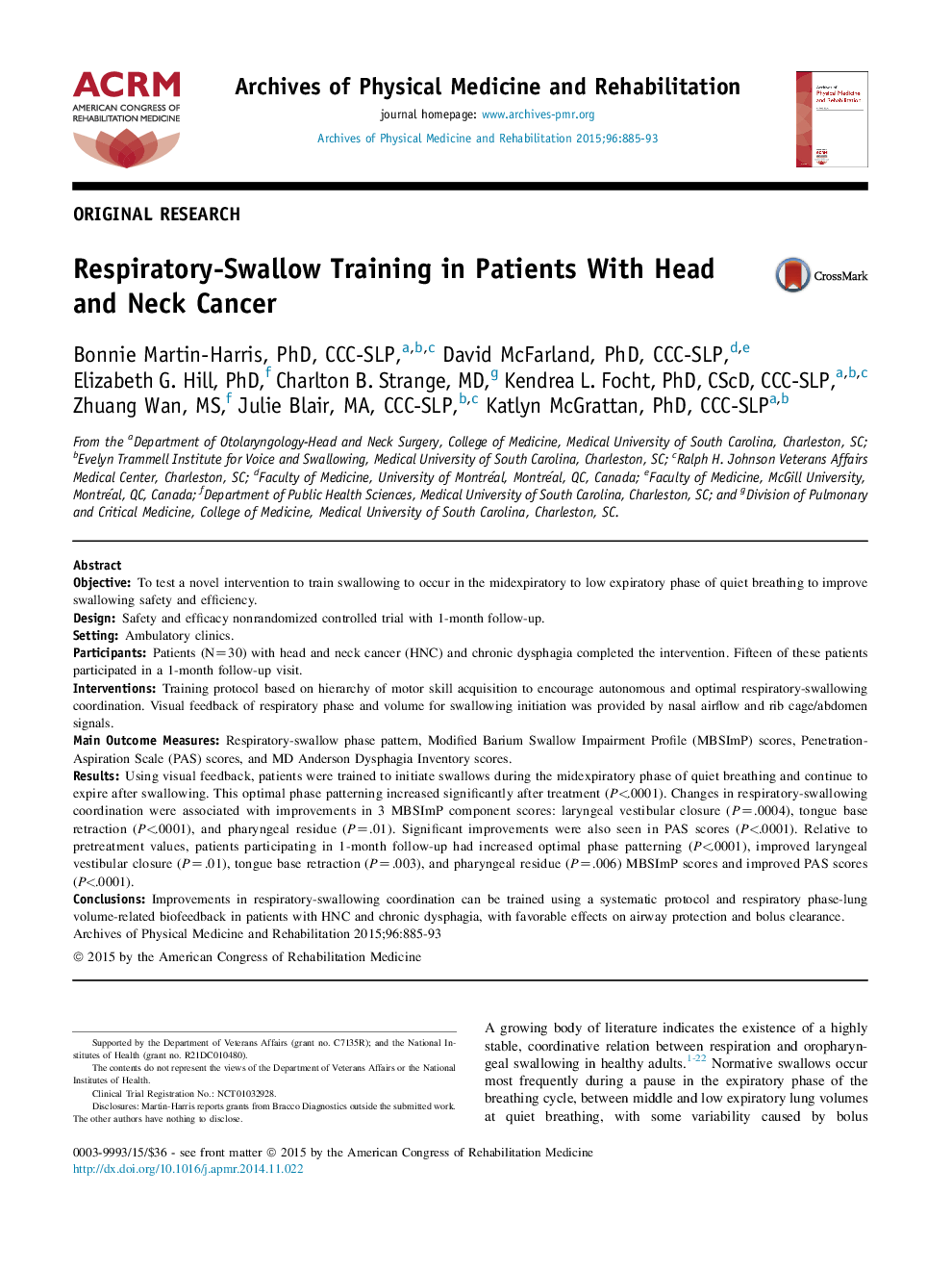| کد مقاله | کد نشریه | سال انتشار | مقاله انگلیسی | نسخه تمام متن |
|---|---|---|---|---|
| 3448378 | 1595683 | 2015 | 9 صفحه PDF | دانلود رایگان |
ObjectiveTo test a novel intervention to train swallowing to occur in the midexpiratory to low expiratory phase of quiet breathing to improve swallowing safety and efficiency.DesignSafety and efficacy nonrandomized controlled trial with 1-month follow-up.SettingAmbulatory clinics.ParticipantsPatients (N=30) with head and neck cancer (HNC) and chronic dysphagia completed the intervention. Fifteen of these patients participated in a 1-month follow-up visit.InterventionsTraining protocol based on hierarchy of motor skill acquisition to encourage autonomous and optimal respiratory-swallowing coordination. Visual feedback of respiratory phase and volume for swallowing initiation was provided by nasal airflow and rib cage/abdomen signals.Main Outcome MeasuresRespiratory-swallow phase pattern, Modified Barium Swallow Impairment Profile (MBSImP) scores, Penetration-Aspiration Scale (PAS) scores, and MD Anderson Dysphagia Inventory scores.ResultsUsing visual feedback, patients were trained to initiate swallows during the midexpiratory phase of quiet breathing and continue to expire after swallowing. This optimal phase patterning increased significantly after treatment (P<.0001). Changes in respiratory-swallowing coordination were associated with improvements in 3 MBSImP component scores: laryngeal vestibular closure (P=.0004), tongue base retraction (P<.0001), and pharyngeal residue (P=.01). Significant improvements were also seen in PAS scores (P<.0001). Relative to pretreatment values, patients participating in 1-month follow-up had increased optimal phase patterning (P<.0001), improved laryngeal vestibular closure (P=.01), tongue base retraction (P=.003), and pharyngeal residue (P=.006) MBSImP scores and improved PAS scores (P<.0001).ConclusionsImprovements in respiratory-swallowing coordination can be trained using a systematic protocol and respiratory phase-lung volume-related biofeedback in patients with HNC and chronic dysphagia, with favorable effects on airway protection and bolus clearance.
Journal: Archives of Physical Medicine and Rehabilitation - Volume 96, Issue 5, May 2015, Pages 885–893
